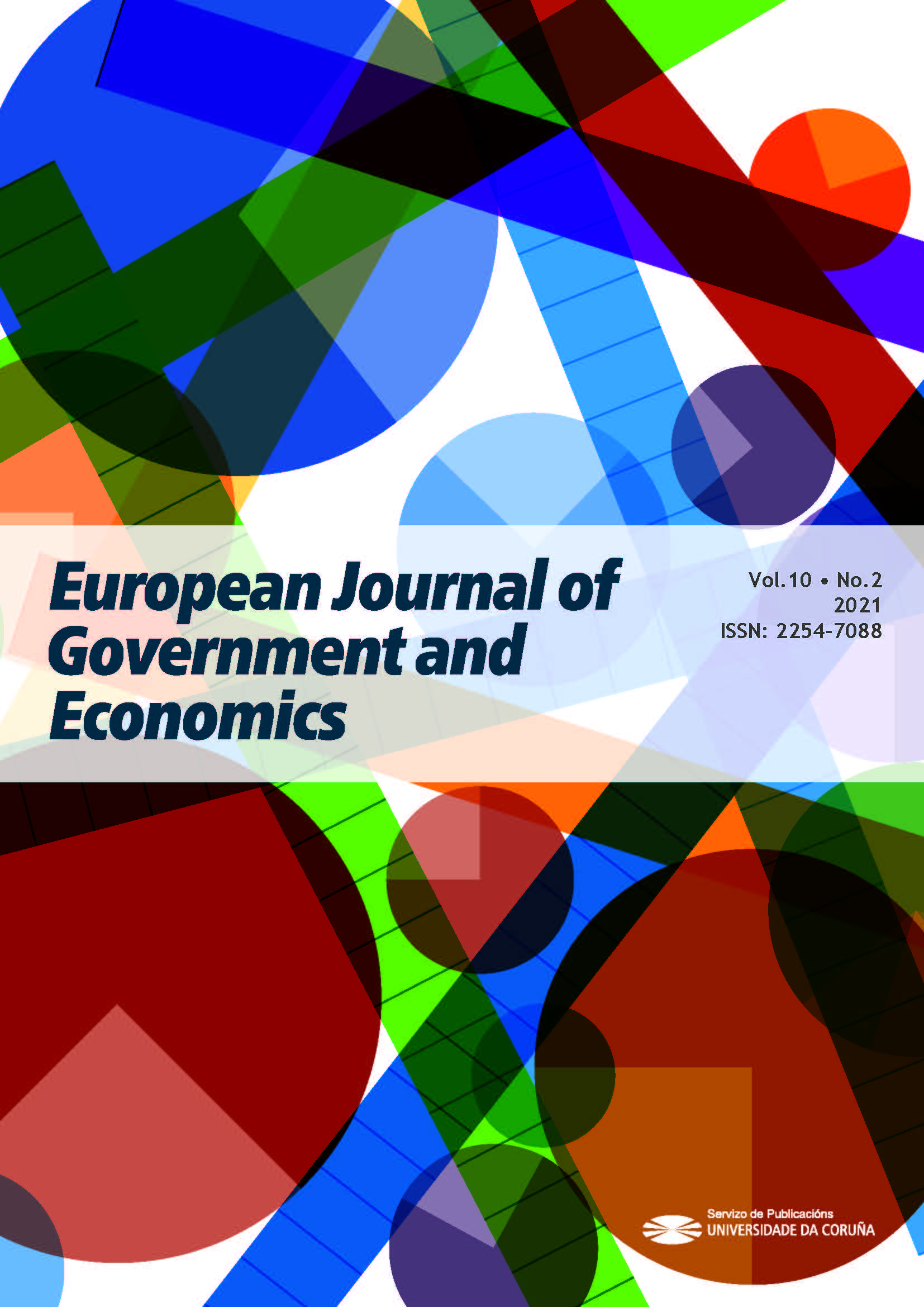The definitive VAT system and its impact on tax collection
Main Article Content
Abstract
Value Added Tax (VAT) is a significant source of fiscal revenues in the EU. However, the VAT treatment of cross-border supplies enables large-scale tax frauds, such as the Missing Trader Intra-Community (MTIC), which takes each year billions of euros from Member States' public budgets. In 2016 a definitive VAT system was proposed by the European Commission to respond to the shortcomings of the current temporary system. This new system should reduce the possibilities of MTIC fraud for intra-community transactions through the collection of VAT by the supplier in the same way as for domestic transactions. The tax collection by the supplier would impact the administrative costs of the financial authorities. This paper contributes to the discussion about the advantages and disadvantages of the newly suggested system. The analysis focuses on the study of the change in administrative costs and VAT revenues for individual Member States and across the EU. The results are that after implementing the definitive VAT system, total administrative costs of the Member States would increase at least by EUR 107 million, whereas total VAT revenues would rise by EUR 40 billion. This indicates the overall positive impact of the definitive VAT system for the EU. However, individual Member States would not benefit equally. The net exporters, whose intra-community supplies exceed the intra-community acquisitions, would spend more than others for the collection of VAT in connection with the international trade of goods.
Keywords:
Downloads
Article Details
References
Ainsworth, R. (2009). The Morphing of MTIC Fraud: VAT Fraud Infects Tradable CO2 permits. Boston University School of Law Working Paper. 09-35. https://doi.org/10.2139/ssrn.1443279
Amand C. (2014). Taxation of Intracommunity supplies of goods. International VAT Monitor 25(4). 188-196. Retrieved from: https://www.ibfd.org/IBFD-Products/Journal-Articles/International-VAT-Monitor/collections/ivm/html/ivm_2014_04_e2_3.html.
CASE. (2019). Study and Reports on the VAT Gap in the EU-28 Member States: Final Report.
Catarino, J. R., & Moraes e Soares, R. (2019). Restructuring the European VAT tax system: advantages and disadvantages of the adoption of a single-rate model – a study based on the Portuguese case. European Journal of Government and Economics 8(2). 145-160. DOI: https://doi.org/10.17979/ejge.2019.8.2.5478
Cnossen, S. (2010). Three VAT studies. Hague: Central Pauberau. Retrieved from: https://cpb.nl/sites/default/files/publicaties/download/bijz90.pdf
Corder, W. G. (2014). Nonparametric statistics: step-by-step approach (2nd ed.). Hoboken, NJ: John Wileys & Sons.
De la Feria, R. (2018). The Definitive VAT System: Breaking with Transition. EC Tax Review 27(3). 122-126. Retrieved from: https://papers.ssrn.com/sol3/papers.cfm?abstract_id=
European Commission (2010). Green Paper: On the future of VAT. Retrieved from: https://ec.europa.eu/taxation_customs/green-paper-future-vat-towards-simpler-more-robust-and-efficient-vat-system_en
European Commission (2015). Implementing the ‘destination principle’ to intra-EU B2B supplies of goods, Feasibility and economic evaluation study, Final Report. Retrieved from: https://op.europa.eu/en/publication-detail/-/publication/f62d669b-503f-41b7-b3b3-a77e87df81be/language-en
European Commission (2016). Action plan on VAT: Communication from the Commission to the European Parliament, the Council and the European Economic and Social Committee. Brussels.
European Commission (2016a). Report on VAT Gap Estimations by FISCALIS Tax Gap Project Group (FPG/041): The Concept of Tax Gaps. Brussels.
European Commission (2017). Council Directive Amending Directive 2006/112/EC as regards harmonising and simplifying certain rules in the value added tax system and introducing the definitive system for the taxation of trade between Member States. Retrieved from: https://eur-lex.europa.eu/legal-content/EN/TXT/HTML/?uri=CELEX:52017PC0569&from=CS
European Commission (2017a). Impact Assessment Accompanying the document Proposal for a Council Directive amending Directive 2006/112/EC as regards harmonising and simplifying certain rules in the value added tax system and introducing the definitive system for the taxation of trade between Member States. Retrieved from: https://ec.europa.eu/
transparency/regdoc/rep/10102/2017/EN/SWD-2017-325-F1-EN-MAIN-PART-1.PDF
European Commission (2020). VAT rate in the EU as of 1 January 2020.
European Council (2006). Council Directive 2006/112/EC of 28 November 2006 on the common system of value added tax. Retrieved from: https://eur-lex.europa.eu/legal-content/EN/TXT/HTML/?uri=CELEX:32006L0112&from=CS
Eurostat (2020). International trade in goods - aggregated data. Retrieved from: https://ec.europa.eu/eurostat/cache/metadata/en/ext_go_agg_esms.htm
Fedeli, S. & Forte, F. (2011). EU VAT frauds. European Journal of Law and Economics 31(2). 143-166. Retrieved from: https://doi.org/10.1007/s10657-009-9135-5.
Hindls, R. (2007). Statistika pro ekonomy (8th ed.). Praha: Professional Publishing.
Keen, M. & Smith, S. (2006). VAT Fraud and Evasion: What Do We Know, and What Can be Done? National Tax Journal 59(4). 861-887.
Lamensch, M. 2012. Are ‘reverse charging’ and the ‘one-stop-scheme’ efficient ways to collect VAT on digital supplies? World Journal of VAT/GST Law 1(1). 1-20. Retrieved from: https://core.ac.uk/download/pdf/80792379.pdf
OECD (2019). International Trade by Commodity Statistics. Retrieved from https://www.oecd-ilibrary.org/trade/international-trade-by-commodity-statistics/volume-2019/issue-6_g2g9fb2a-en
OECD (2020). Tax Administration 2019: Comparative Information on OECD and other Advanced and Emerging Economies. Retrieved from: https://www.oecd.org/tax/administration/tax-administration-23077727.htm
Pomeranz, D. (2015). No Taxation without Information: Deterrence and Self-Enforcement in the Value Added Tax. American Economic Review 105(8). 2539-69. https://doi.org/
1257/aer.20130393
Poniatowski, Grzegorz and Neneman, Jaroslaw and Michalik, Tomasz, VAT Non-Compliance in Poland Under Scrutiny (June 28, 2016). mBank – CASE Seminar Proceedings, No. 142/2016, Retrieved from: https://ssrn.com/abstract=2813160
Poniatowski, G. et al. (2020). Study and Reports on the VAT Gap in the EU-28 Member States: 2020 Final Report. Warsaw: CASE.
Schenk, A., Thuronyi, V. and Cui, W. 2015. Value added tax: a comparative approach (2nd ed.). New York: Cambridge University Press. ISBN: 978-1-107-04298-8.
Stiller, W., Heinemann M. 2019. Reverse-Charge-Mechanism - An effective measure against VAT fraud in Germany and Austria? Betriebswirtschaftliche Forschung und Praxis 71(2):177-192
Stiller, W., Heinemann M. 2019. Do More Harm than Good? The Optional Reverse Charge Mechanism against VAT Fraud. Preprint on Research Gate. https://doi.org/10.13140/
RG.2.2.13802.44482
Tait, A. A. (1988): Value Added Tax: International Practice and Problems. Washington, DC: International Monetary Fund. ISBN:9781557750129. http://dx.doi.org/
5089/9781557750129.071
Terra, B. and Kajus, J. (2015). A guide to the European VAT Directives. Hoorn: IBFD. ISBN 978-90-8722-308-3.
VAT Expert Group (2016). Definitive VAT regime for intra-EU trade. First Step. Issues to be examined. Retrieved from: https://circabc.europa.eu/sd/a/1f174f75-8a88-4f58-94b0-c2d748371ab6/57%20-%20Definitive%20regime%20for%20intra-EU%20trade%20-%20First%20step%20-%20Issues%20to%20be%20examined.pdf
Vaškovič, M. Zídková, H. Arltová, M. The volume of MTIC fraud between Poland and Czechia in electronic devices trade: general method of carousel fraud estimation. International Journal of Economic Policy in Emerging Economies. 2021. ISSN 1752-0452. https://www.inderscience.com/info/ingeneral/forthcoming.php?jcode=ijepee#96641
Zídková, H., Vrána, T. (2020). Is VAT Administration System Efficient? The case of the Czech Republic. Central European Public Administration Review 18(2), 121–134. DOI: https://doi.org/10.17573/cepar.2020.2.06
Zídková, H., Šťastná, A. (2019). VAT Collection Methods. Acta Universitatis Agriculturae et Silviculturae Mendelianae Brunensis 67(3). 883-895. https://doi.org/10.11118/actaun






